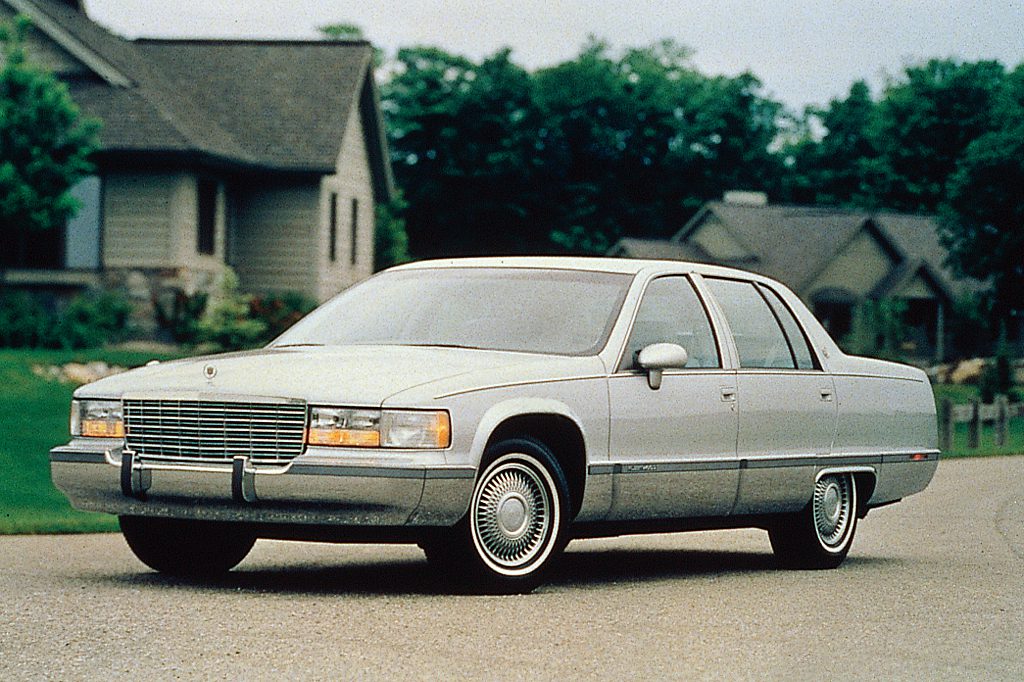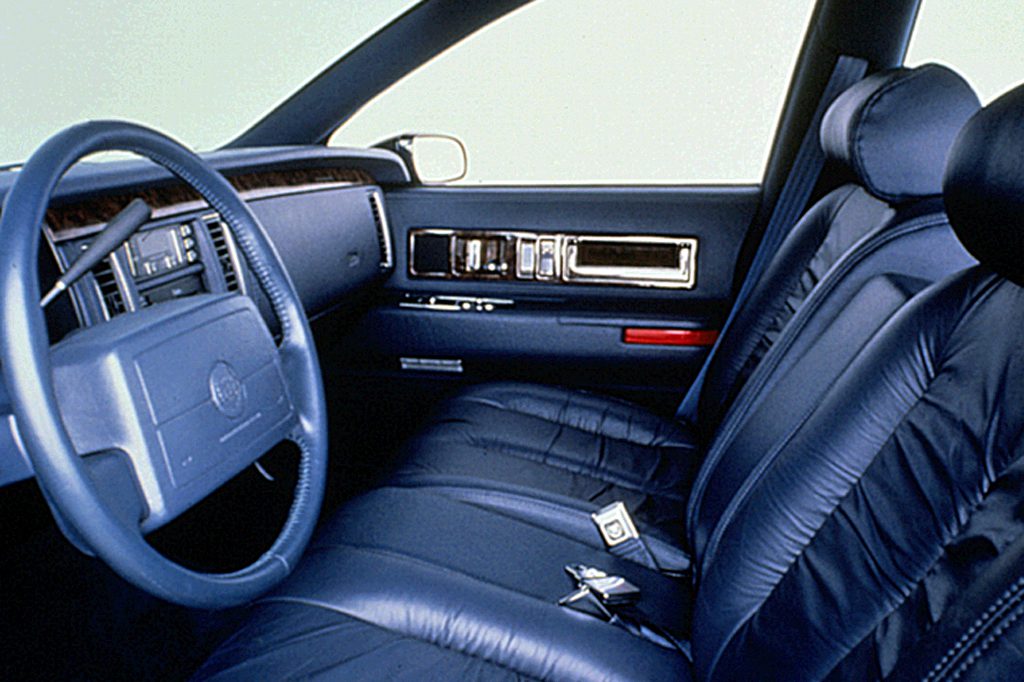| Premium large car; Built in USA |
|
|
| Good condition price range: $1,800 – $3,200* |

1993 Cadillac Fleetwood

1993 Cadillac Fleetwood Brougham Sedan

1996 Cadillac Fleetwood

1993 Cadillac Fleetwood Brougham Sedan interior

1994 Cadillac Fleetwood engine
| Pros: |
|
| Cons: |
|
Quite a few traditional-type shoppers regret the fact that Cadillac stopped making these big rear-drive sedans. If you tow a trailer and travel cross-country, a Fleetwood just might be your best practical choice.
Overview
Renamed Fleetwood in a restyle for 1993, this big traditional rear-drive sedan gained dual airbags and four inches in length. More-rounded than the old Brougham, the mid 1990s Fleetwood was built on the same platform used by the Buick Roadmaster and Chevrolet Caprice. In this case, though, the chassis was stretched five inches for a 121.5-inch wheelbase. At 225 inches overall, Fleetwood was the longest production car built in the U.S. Initial Fleetwoods held a 185-horsepower V8, with 4-speed automatic transmission. Standard traction control and antilock brakes made this rear-drive sedan an all-weather vehicle. Dual airbags were installed, and head room grew an inch in the rear, leg room 2.7 inches.
Yearly Updates
| 1994 Fleetwood Tucking a Corvette-derived LT1 engine under the hood of a Fleetwood gave this traditional-size sedan a new personality. A new transmission with electronic controls helped take full advantage of the extra power. An optional trailer-towing package increased capacity to 7000 pounds. |
| 1995 Fleetwood Traction control added an on-off switch. New platinum-tipped spark plugs were installed, along with transmission fluid that was intended to last 100,000 miles. Outside mirrors grew larger, sat farther forward, and incorporated a new foldaway feature. |
| 1996 Fleetwood The final season for the traditional-size, rear-drive sedan, changes were few. A folding center armrest for the front seat included storage for cassettes and CDs, and dual cupholders. |
